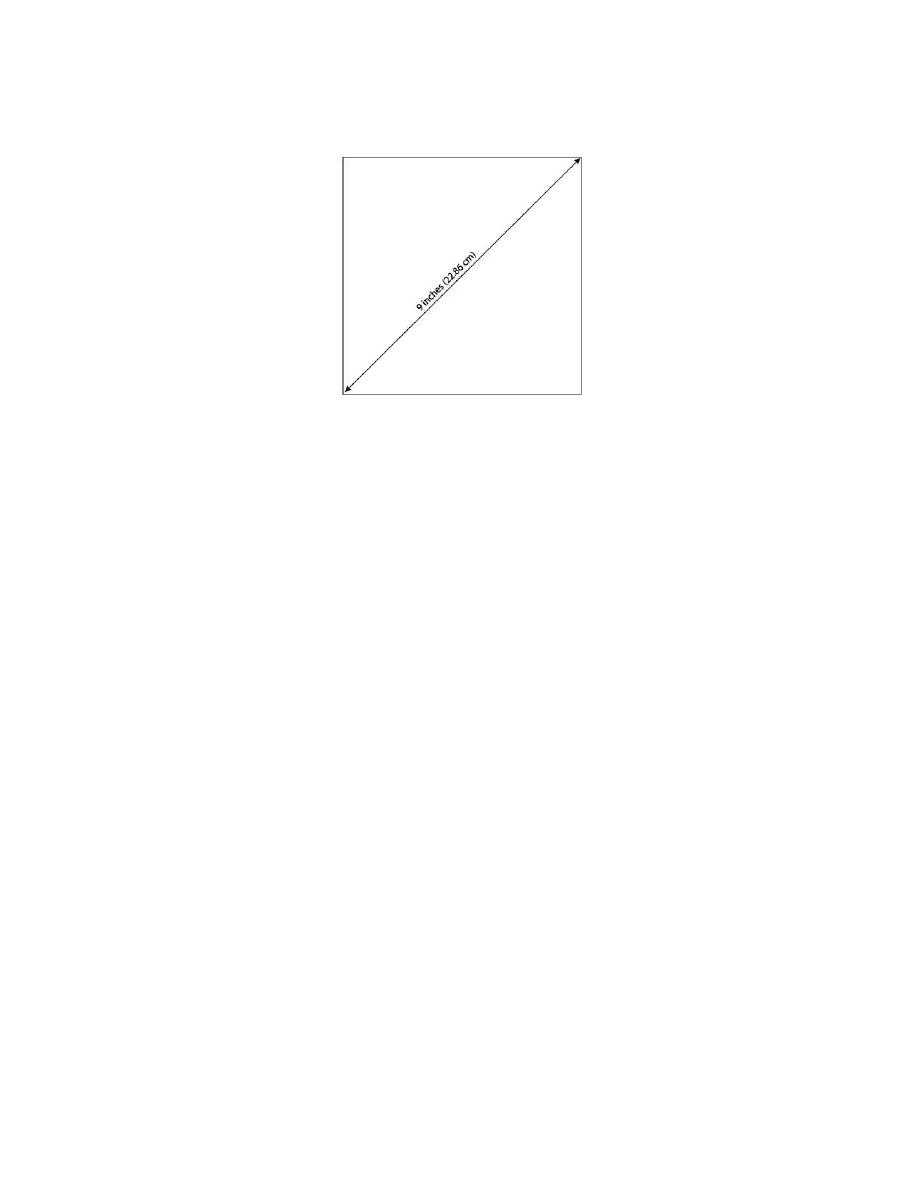
UFC 4-021-02NF
27 September 2006
change 1, 23 October 2006
Figure 4-2. Dimensions of a "9-inch" ESS Display
4-3.3
Computer Monitors. Normally supplied as CRTs, computer monitors are
increasingly being used as CCTV display components. Typical sizes include 15, 17, 18,
and 21 inches.
4-3.4
LCD. LCD displays utilize two sheets of polarizing material with a liquid
crystal solution between them. The solution is liquid materials that have crystal-like
properties. These materials exist as solid crystals at low temperature, but when the
temperature rises they become a milky liquid and at higher temperatures, the solution
becomes clear liquid. In the display assembly, an electric current passes through the
crystals to align them so that light cannot pass through thereby blocking a blacklight
source. Each crystal, therefore, is like a shutter, either allowing light to pass through or
blocking the light. High quality LCD displays (such as those required by ESS) use
segment drivers to orient individual pixels for image generation. LCDs can be provided
in either monochrome or color assembly units. LCDs commonly are provided in the 15
to 40 inch dimension range.
4-3.5
Plasma Displays. Plasma displays consist of two glass substrates bonded
with an intermediate cell. Powering of the plasma display unit results in a high-quality
image on the display side of a color filter unit. The displays are programmable and can
display multiple images in a matrix format. Common plasma display sizes range from 42
to 84 inches.
4-3.6
Summary. Due to a past history of being the workhorse for security display
needs, CRTs are readily available through security vendors as a standard product
offering competitive prices, available inventories, and standardized dedicated conductor
connections. As another variant of CRT screens, for small quantities of cameras, use of
PC monitors are being used. With PC based video presentation, it is not important to
constrain the matrix to a square. The display can be dynamically sized based on events.
New developments in large format displays offer advantages of consuming less space,
consuming less power, and offering greater flexibility in display format. In addition to
requiring less power and space, large format displays offer the advantage of little to no
glare off the display screen. Currently, large format displays are usually made and
offered by flat panel suppliers and need to integrated into a CCTV display system.
47


 Previous Page
Previous Page
